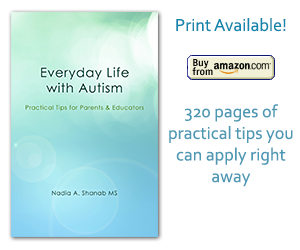Guidelines To Diagnose Autism
Nadia Shanab | autism, general advice, parenting, tips14 Jul 2015

To diagnose autism no lab work, devices, nor equipment are needed. The only thing that is requested from parents and licensed professionals to do is to fill out some questionnaires. Filling out papers is based on observing the child’s behavior in different settings, like interacting with family members, strangers, at home, new places, with toys and responding to different stimuli.
Sometimes, hearing, vision, or other tests are done prior to filling out these form in order to eliminate some misleading factors.
For example, a child who doesn’t respond/acknowledge when her/his name is called on, doesn’t necessarily mean this is a sign of autism.
Questions are designed and listed in respect of age. So, questions relate to each period of age. As you will see, the child doesn’t have to meet/match all sets of questions to test positive for autism. The rule will be explained in the links below. A set of combinations should be met to come up with a diagnosis.
In the U.S. the main guidelines to diagnose are below:
1- Diagnostic and Statistical of Mental Disorders (DSM-5) 2013
Changes may get added to the DSM-5, make sure to stay up to date. New editions are always available to buy on amazon. You have the option to buy or rent.
3- DSM-5 comes in paperback or hardcover or Kindle edition.
Tip
1- Luckily, testing can start at a very early age now. If you notice any suspicious behavior on your child don’t wait. See a health provider, starting with your child’s doctor.
2- The earlier your child is diagnosed, the better her/his future.
3- Don’t think of autism as a label to judge you or your child, it is a diagnosis to give you access to valuable services.
Children with autism are teachable and trainable, get them started.
nadia shanab
Tags: amazon, asperger's syndrome, autism, diagnosis, DSM-5, parenting, placement, research, senses, signs of autism, social interaction, speech, symptoms of autism
